I took a drive yesterday to a place some might call the middle of nowhere, but to me it’s somewhere in particular.
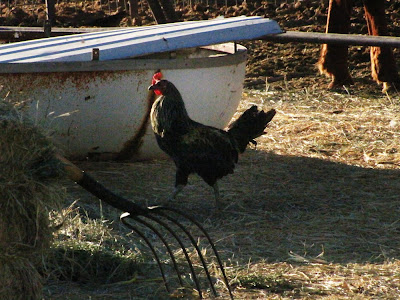 After I got out of the car, I had a chance to study my cousin’s collection of critters. She has quite a hand with the farmyard.
After I got out of the car, I had a chance to study my cousin’s collection of critters. She has quite a hand with the farmyard.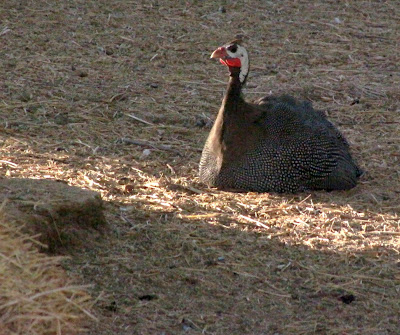
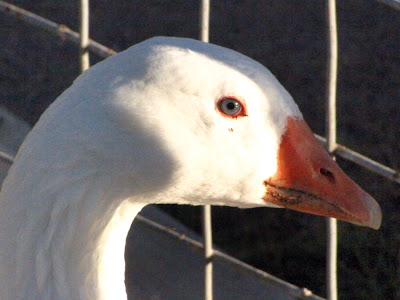
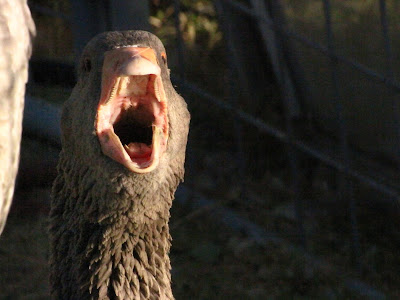 To get a group of Americans to smile, you tell them, “Say ‘Cheese’!” To get this expression from a goose, you tell it, “Say ‘Foie gras’!”
To get a group of Americans to smile, you tell them, “Say ‘Cheese’!” To get this expression from a goose, you tell it, “Say ‘Foie gras’!”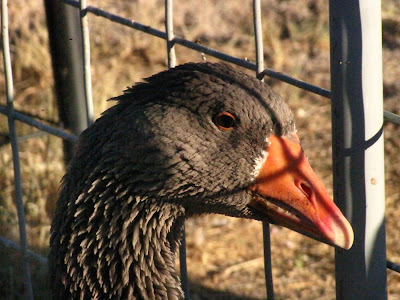
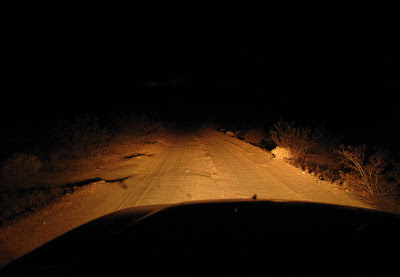 I was in town for a meeting. After the meeting, I took a side road to have a look at stars. One advantage of being nowhere near anything in particular is that the night sky is clear and dark.
I was in town for a meeting. After the meeting, I took a side road to have a look at stars. One advantage of being nowhere near anything in particular is that the night sky is clear and dark.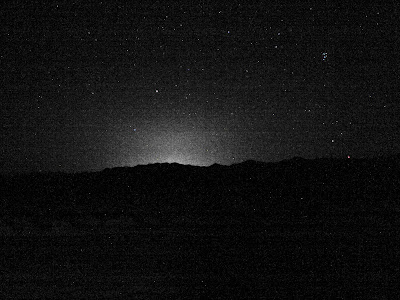 The lights over the ridge are Las Vegas, about 100 miles from where I took this. To the naked eye, the glow is plainly visible. The camera wasn’t so sensitive to it, but as you can see, it did pick it up.
The lights over the ridge are Las Vegas, about 100 miles from where I took this. To the naked eye, the glow is plainly visible. The camera wasn’t so sensitive to it, but as you can see, it did pick it up.Red Hot Chili aficionados will be pleased to spot the Pleiades here, the little bunch of stars near the upper right corner. I tried to get a better shot of them, but I couldn't line them up in the camera’s viewfinder, which showed only the very brightest stars.
(On all of these pictures, if you click on the picture itself, you’ll get to see a bigger version with richer detail.)
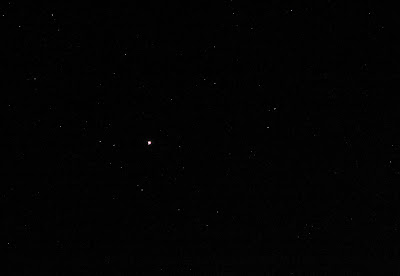 Jupiter hung up there fat and red and sassy, in the middle of Capricorn. Off to his left is Deneb. If you had an exceptional telescope, you could have seen Neptune in the same neighborhood. (Pluto wasn’t too far off either.)
Jupiter hung up there fat and red and sassy, in the middle of Capricorn. Off to his left is Deneb. If you had an exceptional telescope, you could have seen Neptune in the same neighborhood. (Pluto wasn’t too far off either.)I was pretty pleased with how these pictures came out, for a first stab. I had a tripod mount, but not a cable release. On most of the pictures I exposed for 10+ seconds at full lens extension, the results revealed a visible drift. This picture was taken at a 1-second exposure length, with the lens at a wide-angle setting (35mm equivalent about 28mm).
Galileo spotted the moons of Jupiter using a 20x telescope. With a very steady tripod, and a good lens, and the right exposure, a halfway decent photographer today ought to be able to pick up something interesting out there. I was shooting in the dark, not sure whether I’d get any decent results, but having seen what I did get, I’m tempted to try again, refining my technique as I go.
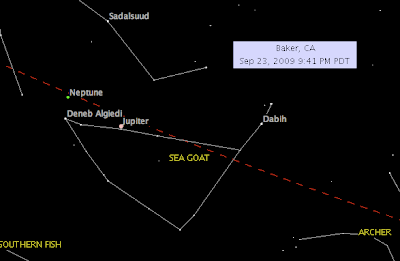 Star map courtesy of AstroViewer
Star map courtesy of AstroViewerNo photograph, on film or in pixels, can really capture the depth and majesty of the night sky itself. You can take a picture that shows where the stars are; you can even take a picture that shows how many stars there are. But no reproduction really catches the texture and illumination of the original experience.



No comments:
Post a Comment